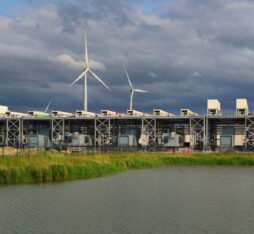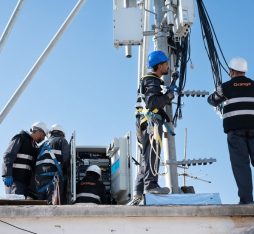"This is a major step forward for Orange, which can now react in good time and prevent the congestion of its network. It is also a significant advantage for the end user."
Network supervision is advancing thanks to artificial intelligence. One Orange laboratory in Belfort has offered further proof of this by developing a predictive analysis solution that can prevent mobile network traffic overload. An algorithm can now detect imminent congestion 30 minutes before it occurs, with a success rate of over 80%. This predictive maintenance solution saves Orange network engineers valuable time, enabling them to offload the cell congestion and distribute the load to neighbouring cells as a precaution.
The algorithm uses machine learning techniques to observe trends across four radio quality indicators (latency; average throughput on the downlink; average number of users on the downlink per cell; and cell load) and determine the link between the behaviour of these indicators and the occurrence of congestion in a given cell. Researchers found that if one of these indicators exceeds a particular threshold, this automatically causes network congestion. “By studying the behaviour of these indicators over time on the basis of machine learning algorithms, we can predict when congestion will occur for a given cell”, explains Imed Hadj Kacem, Data Scientist at Orange.
The challenge of data collection
Sylvain Allio, Research Engineer at Orange, notes that this method is new in several ways: “Usually, performance indicators are considered individually. With this artificially intelligent solution, the problem becomes multifaceted as the impact of several variables are considered at the same time”.
The team has also developed innovations relating to data preparation by taking a functional approach, using mathematical functions with the aim of understanding data trends over time. “We can correct errors and add missing data using values close to reality”, says Imed Hadj Kacem excitedly.
The current model is able to predict more than 80% of problems. “It is an important asset that allows operational teams to be proactive and prevent congestion, rather than resolve it after the fact”, Sylvain Allio notes. “This presents a considerable advantage for the end user, as it ensures optimal service over time and distance”.
His team is already working on the next step: using artificial intelligence to optimally offload traffic from congested cells to neighbouring cells that are less congested. In doing so, their goal is to provide a better quality of service to the user. This work is carried out in collaboration with a team in Châtillon, allowing this predictive analysis to be incorporated into an automated load management algorithm.
AI and data at the heart of Orange’s strategy
The solution developed by the laboratory in Belfort could have other applications. The developed model is generic enough to integrate other performance indicators, which means that the algorithm could be used to detect sleeping cells — cells that are out of service in the radio network. Hardware and/or software problems cause these cells go into “standby” or “out-of-service” mode, rendering radio network services inaccessible.
This predictive algorithm makes the work of technical teams easier while improving the experience of the end customer.










